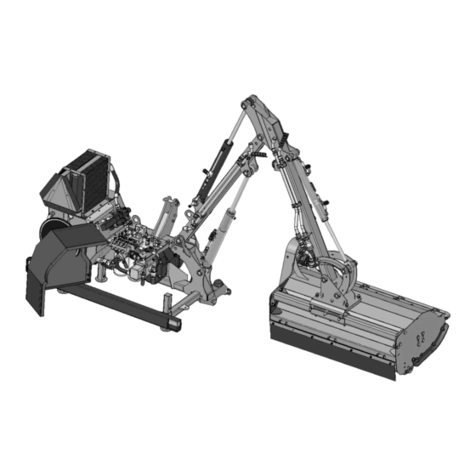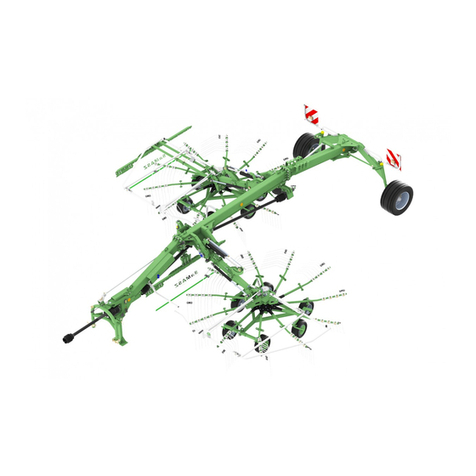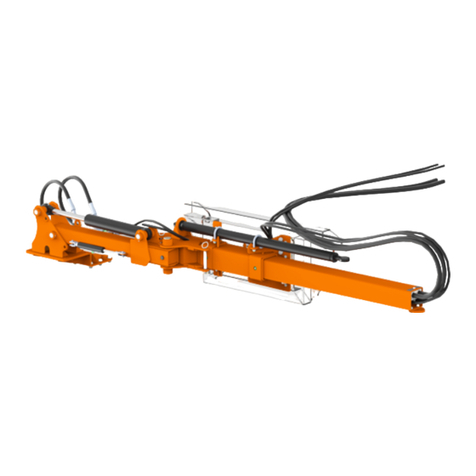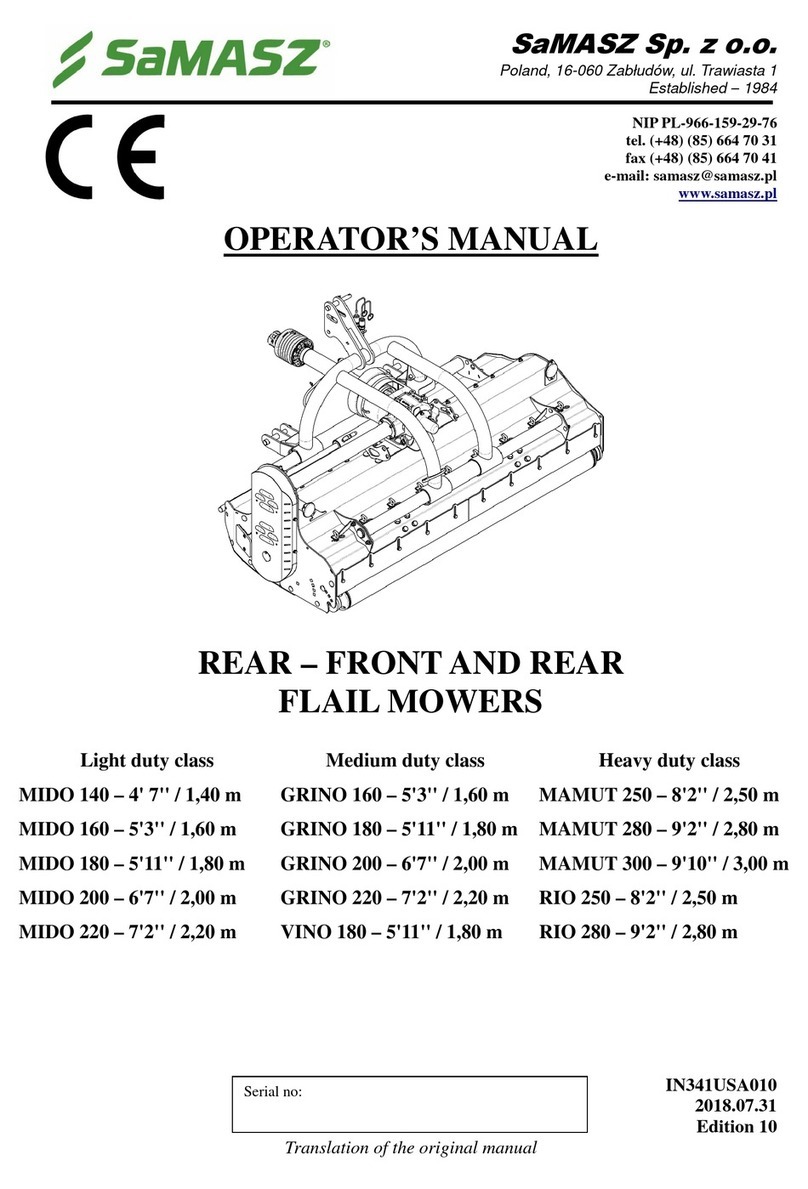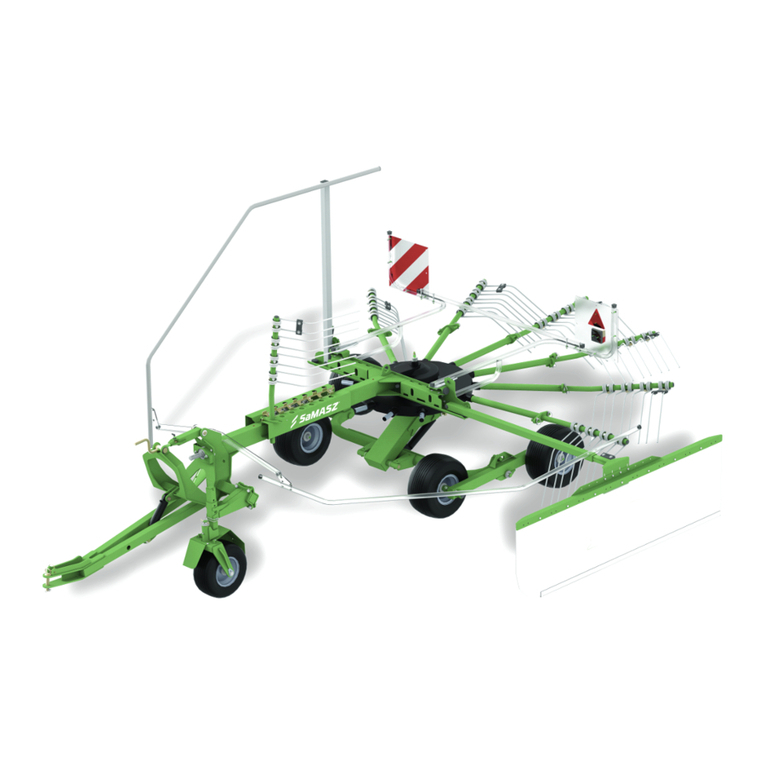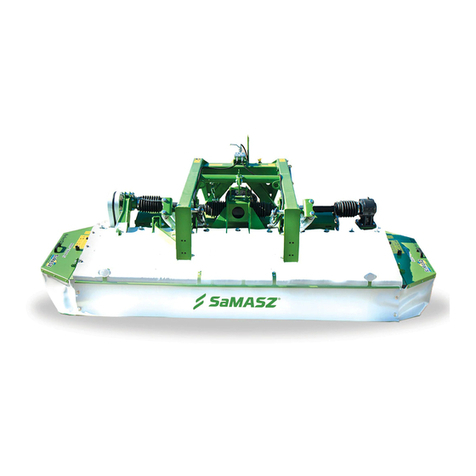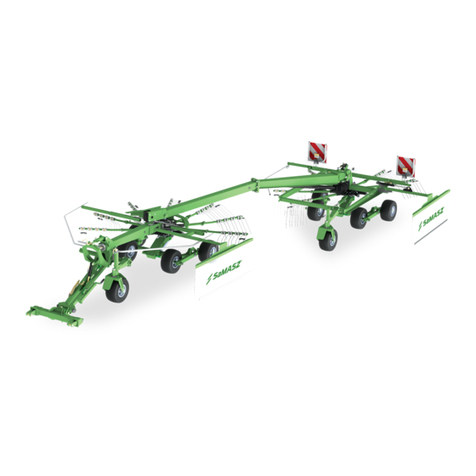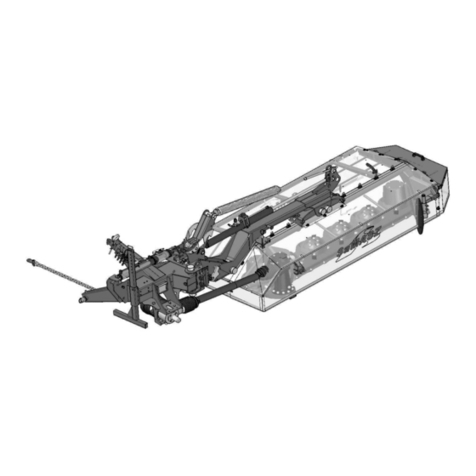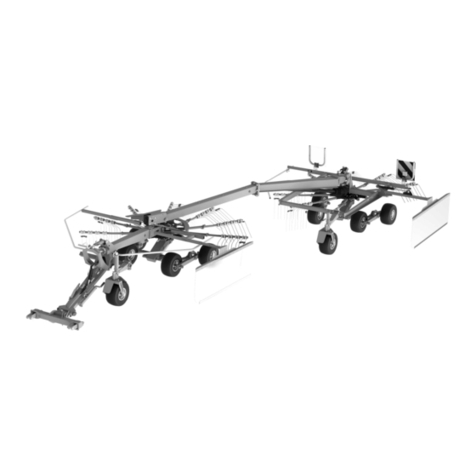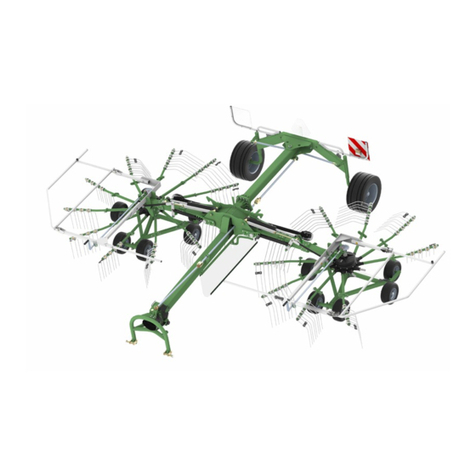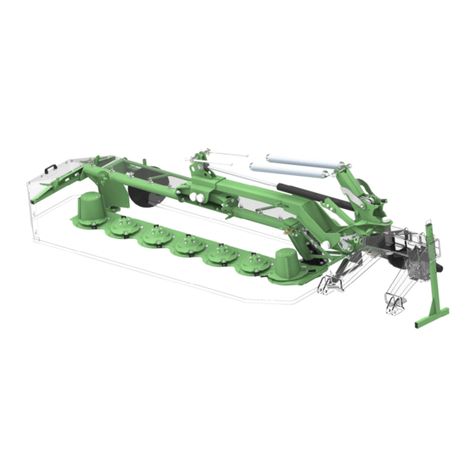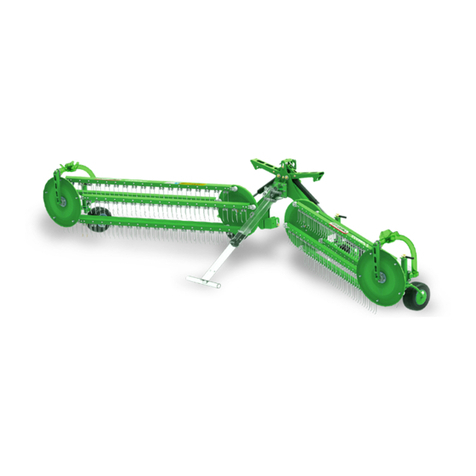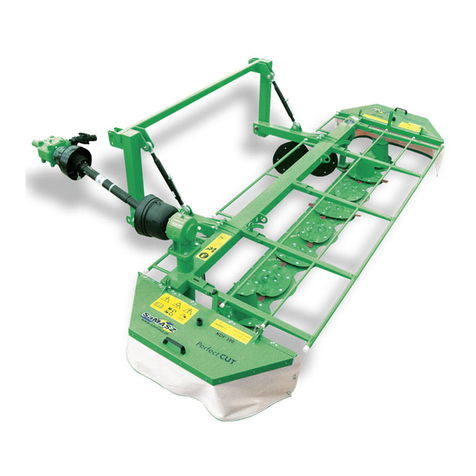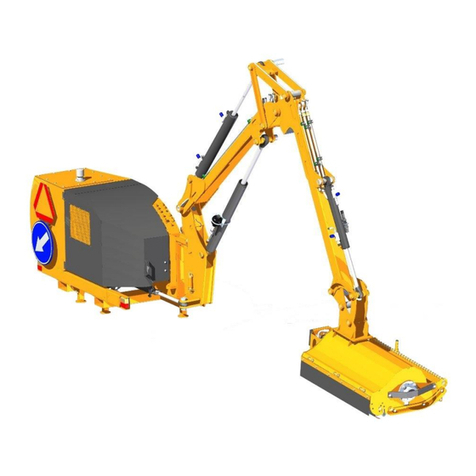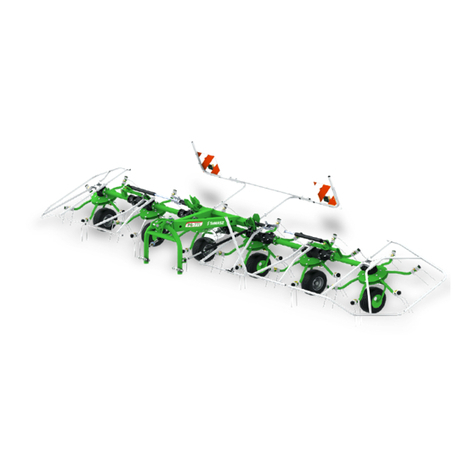
Operator's manual
Rotary rake UNO
- 8 -
4.2. Transport
The lifting, handling and transporting operations can be very dangerous unless they are carried
out with the utmost caution. Have all persons not involved in the actual work move away from
the area and limit the zone where the operations are to be carried out. Also make sure that the
area in which the operations take place is clear and that there is a sufficient escape route, i.e. a
free, safe zone to which the operators can quickly move if the load should fall.
The safety hooks and ropes used to lift the machine must be of an adequate carrying capacity
To minimize the risk of serious injury or death, do the following:
When the machine is converted from the transport position to the work position and vice versa,
you could be pinched or crushed by some of its parts. Take extra care when carrying out these
maneuvers and have all persons keep well clear of the danger zone.
Do not change position of the rake until there are no people or animals around (pay particular
attention to children).
While transporting the rake, put a warning plate with combined lights and reflectors and
warning triangle on the rake.
During transport, always put the rake in its proper and safe transport position. See section 5.3.
Before putting the rake in transport position, make sure that the tractor’s PTO is turned off and
all rotating parts have come to a complete stop.
Do not drive over 25 km/h (15 mph). Drive slower if road conditions are poor, especially on
irregular surfaces or steep slopes.
The behavior of the tractor on the road, such as its turning and braking capacities, are affected
by the implements mounted.
When driving on the road after work, check to make sure that the tires and soil working tools
are clean to prevent the road surface from becoming dirty.
4.2.1. Putting the rake onto another vehicle for transport
The driver and the carrier are responsible for the rake’s transport safety. Equipment and
parts must be secured during transport. To put the rake onto another vehicle in a safe way, please
obey the following rules.
Transport should be done by qualified and specifically trained personnel,
Grab the rake by any lifting device only in places indicated by hook sign.
For rake lifting, use only lifting devices with hoisting capacity larger than rake’s weight shown
in data plate. This also applies to ropes and chains used for lifting,
Do not lift if transport belts, belt suspensions, ropes are damaged. Whenever damage to these
parts occurs, replace with new ones,
When mounting slings, chains, handles etc., always set the machine's center of gravity properly,
To safely support the machine, use ropes of adequate length so that the angle between them is
no greater than 120°, and the angle between the strand and the vertical is no greater than 60°,
Lift the rake with the utmost caution and move it slowly,
No one should be within the range of action of the lifting equipment when any transporting
operations are being carried out
Collapsible parts should be blocked in transport position,
When the rake is on the vehicle’s trailer, the machine should be secured against moving.
